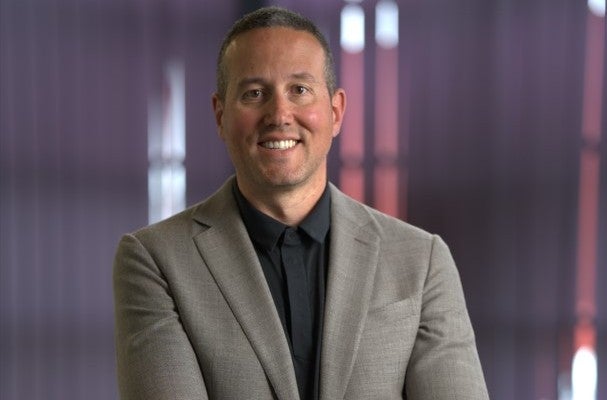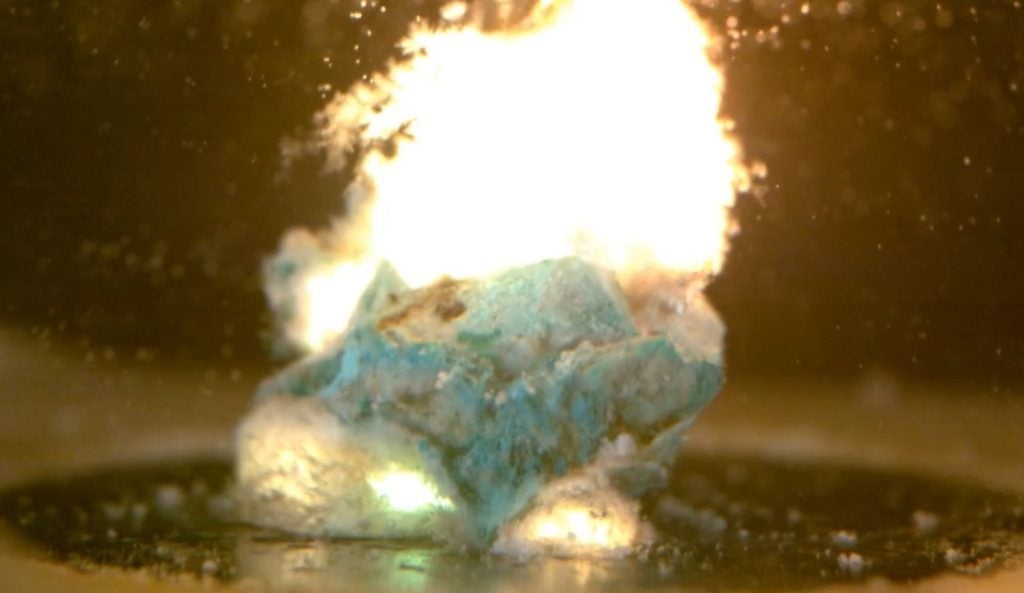I-ROX’s ground-breaking technology has gained interest and investment from leading mining companies and climate-tech giant Breakthrough Energy, which was founded by tech mogul Bill Gates in 2015.
It sounds like something out of a science fiction movie but it’s not. I-ROX claims it can take the energy stored in a watch battery and release it in a short, millionth-of-a-second, high-intensity pulse that can generate a gigawatt of power – similar to the output of a nuclear power plant.
This isn’t a bold claim from a plucky climate-tech start-up pushing futuristic technology – pulsed power has a long-established history in military and scientific research going back more than 70 years, particularly in the fields of particle physics and nuclear fusion simulation.
I-ROX CEO Nathan Flaman and his pioneering team of technology innovators based in Toulouse, France, aim to disrupt the mining industry by transforming mineral comminution, which is estimated to consume around 4% of global electrical energy.
Here, he tells Mining Technology about I-ROX, its technology and the company's powerful partnerships. Plus, Flaman hints at the possibility of planetary space resource mining in the future.
Caroline Peachey (CP): Can you tell us a little about I-ROX?
Nathan Flaman (NF): The only way to avoid the worst impacts of climate change is to reduce global greenhouse gas emissions from 51 billion tonnes a year, where they are now, to net zero by 2050. This will result in a shift from fossil-fuel-based [energy] systems to renewable energy, combined with increased electrification and improvements in energy storage – all of which we are already seeing.
This monumental energy transition requires a tremendous amount of critical minerals and materials including copper, cobalt, nickel and rare earths. However, separating all these minerals from rock requires a large amount of energy to grind the ore into tiny particles. Globally, this creates a massive emissions footprint – as much as the emissions of an entire country like Germany.
Our objective at I-ROX is to break rock with less energy, and in a way that enhances mineral recovery. By making mines more efficient and productive, we can reduce emissions, save money and increase production all at the same time.
CP: What is pulsed power?
NF: Pulsed power is the compression and rapid release of small quantities of electrical energy to obtain extremely high-power discharges. Basically, power (P) = energy (E) over time (t), so the same quantity of energy released in a very short amount of time results in high levels of power.
Pulsed-power generators store electrical energy, compress it in time and space, and deliver it as a strong, fast and short high-power pulse. In a pulsed-power machine, low-power electric energy from just a wall plug can be stored in an electrical bank and leave as a compressed pulse of power. The duration of the pulse is increasingly shortened and with each shortening of the pulse the power increases, resulting in a very short pulse with enormous power.
This capability to safely and repeatedly deliver large amounts of power in brief moments opened up innovative approaches in various applications, from nuclear research to industrial manufacturing processes, and now I-ROX is using it to disrupt the mining industry and help enable the energy transition.
CP: How does I-ROX look to transform mining?
NF: To deliver the energy transition needed to achieve the ambitious decarbonisation targets that have been set, we need to mine more copper in the next 25 years than was mined in all of human history.
Meanwhile, copper grades are declining, which means we need to process more material and grind more rock just to stand still. This makes it incredibly important to mine more sustainably, with less environmental impact – otherwise, as we increase the amount of ore mined, we will be increasing the environmental impact.
I-ROX aims to reduce the energy used to grind rock by up to 80%. By using less energy we help to reduce both CO₂ emissions and the cost of mining, which means we can process lower-grade ores with less environmental impact.
CP: How does I-ROX technology differ from traditional methods of breaking rock?
NF: Since ancient times, mineral ore has been broken by placing a compressive force on the outside of a rock until it breaks. From the stamp mills used by the Romans to the high-pressure grinding rolls of today, this way of breaking rock has not changed – until now.

Rocks break much easier using a tensile force – that is breaking them open from the inside. The challenge is how to effectively and repeatedly place energy inside of the rock, causing it to burst. The mining industry already uses this method when it drills and blasts very large rocks. I-ROX has found a way to do this with small particles of rock by using pulsed power to create an electrical arc that passes through the rock, causing it to burst and exposing the valuable minerals inside.
CP: How does I-ROX recover more minerals than traditional milling?
NF: Separating metal from rock typically requires a ball mill to progressively grind mineral ore into very small fragments – typically 50–150 microns in size (by comparison, a human hair is 70 microns) – to expose the tiny particles of metal that are trapped in the rock.
If the metal is not exposed it may not be recovered, thereby grinding to a very small size is necessary to expose as much of the metal as possible. This requires an incredible amount of energy and yet around 15% of the metal is often left behind, either through not being ground fine enough to expose the metal, or being ground too small (into ultra-fines) so that the metal isn’t recoverable [using] the flotation method.
I-ROX technology breaks rock along the mineralogical boundaries, which selectively exposes more of the metal. This enables greater control over the particle size distribution, avoiding the production of ultra-fines and associated flotation losses. Our lab results indicate we could potentially increase copper recoveries by 5%, which is very exciting.
CP: Where has the investment in I-ROX come from?
NF: We raised our capital in a Series A investment round and currently have three investors: I-Pulse, BHP and Breakthrough Energy. We have also received non-dilutive funding from the French Government. In total, we have raised close to $30m.
I-ROX grew out of I-Pulse, which has successfully commercialised pulsed-power applications in industries such as advanced manufacturing, natural resources and energy.
CP: There has been some talk about your technology going into space – can you tell us about that?
NF: We have had some light-hearted discussions with the team about the future possibilities of our technology, especially as there is continued interest in mining the moon, asteroids and other planets at some point.
The issue with ball mills is they need gravity to work, whereas I-ROX functions perfectly fine in zero gravity, so we are uniquely positioned to potentially start having that conversation. While we do have connections to NASA, no discussions have taken place, so let me get back to you on that in a few years.
CP: Where do you hope to be in five years?
NF: The next step for us is to build and operate a pilot unit at an industrial site, which we are planning to do in 2026.
One option we are looking at is in the US, and for this project we partnered with Sandia National Laboratory to apply for funding from the US Department of Energy.
Another option is one of BHP’s copper mines in South Australia and similarly, there we have also applied for government funding to support that project.
Both the US and Australia have programmes in place to provide non-dilutive funding for up to half the cost of a pilot plant. Following a successful pilot, we will leverage that momentum to build the first commercial-scale unit by 2030.
I-ROX is open to industry input, collaboration and support – both financially and technically. If you are interested in discussing pulsed power technology, or any other element of collaboration, please visit the company's website for more information.









